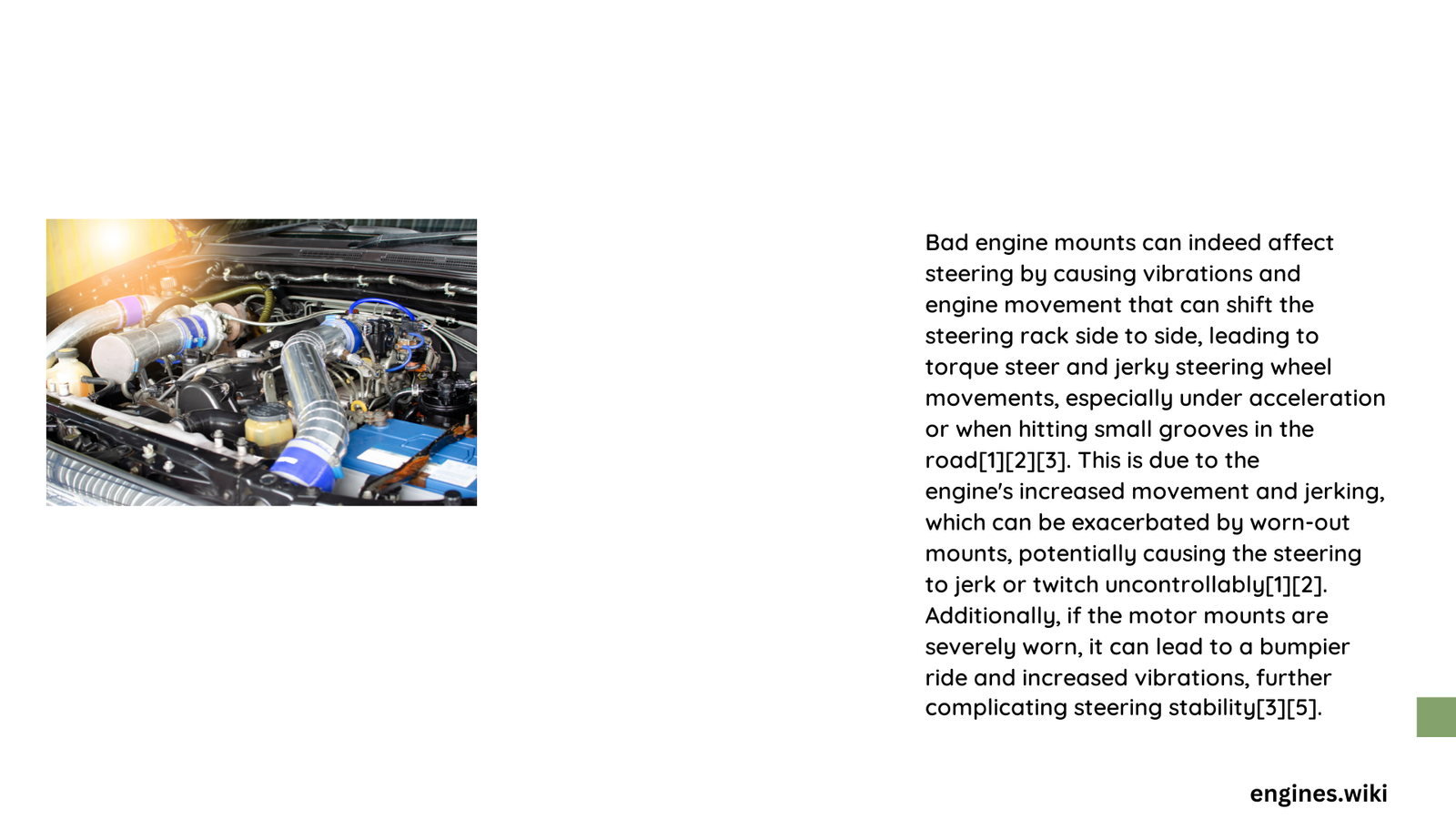Engine mounts play a critical role in vehicle stability, and their deterioration can create unexpected complications for steering systems. When these crucial components fail, they introduce excessive engine movement and vibrations that can compromise driving precision, potentially affecting vehicle control and overall safety. Understanding the intricate relationship between engine mounts and steering performance is essential for proactive automotive maintenance.
What Happens When Engine Mounts Fail?
How Do Bad Engine Mounts Create Steering Complications?
Bad engine mounts can indirectly affect steering through several mechanical interactions:
- Vibration Transmission
- Excessive engine movement transfers vibrations through vehicle chassis
- Steering column experiences unexpected oscillations
-
Reduced driver control and comfort
-
Mechanical Misalignment
- Worn mounts allow engine to shift unexpectedly
- Potential stress on steering rack components
- Increased risk of premature wear in related systems
What Specific Symptoms Indicate Engine Mount Problems?
| Symptom | Potential Impact on Steering |
|---|---|
| Excessive Cabin Vibrations | Reduced steering precision |
| Unusual Engine Movement | Potential steering column stress |
| Clunking Noises | Indication of mechanical instability |
Can Steering Performance Directly Suffer?

While engine mounts do not directly control steering mechanisms, their degradation creates cascading effects:
- Indirect Steering Complications
- Increased lateral movement during acceleration
- Potential steering wheel wandering
- Reduced overall vehicle stability
What Technical Factors Contribute to Steering Issues?
Engineers recognize multiple interconnected factors:
- Mechanical Load Distribution
- Engine mounts absorb powertrain movements
- Failure disrupts intended load transfer
-
Creates unpredictable steering responses
-
Vibration Frequency
- Damaged mounts alter natural vehicle vibration frequencies
- Can induce resonance in steering components
- Potentially compromises driving dynamics
How Can Drivers Diagnose Potential Problems?
What Should You Look For?
- Unusual steering wheel behavior
- Increased cabin vibrations
- Noticeable engine movement
- Inconsistent driving feel
- Unexpected steering resistance
Recommended Diagnostic Approach
What Professional Steps Ensure Accurate Assessment?
- Visual Inspection
- Check mount physical condition
- Look for visible cracks or deterioration
-
Assess rubber mount integrity
-
Professional Diagnostic Techniques
- Computerized vibration analysis
- Comprehensive suspension system evaluation
- Precise mount performance measurement
Cost Considerations for Repair
What Expenses Might Drivers Encounter?
- Replacement Costs
- Individual mount: $50 – $200
- Complete mount set: $200 – $600
- Labor: $100 – $300
Critical Maintenance Recommendations
How Can Drivers Prevent Steering Complications?
- Regular professional inspections
- Timely mount replacement
- Proactive maintenance schedule
- Immediate attention to unusual symptoms
Final Technical Insights
Bad engine mounts represent a nuanced mechanical challenge that extends beyond simple component failure. Their impact on steering involves complex interactions between powertrain, chassis, and suspension systems. Drivers should prioritize understanding these relationships to maintain optimal vehicle performance and safety.
Technical Precision Matters
While engine mounts do not directly control steering, their condition significantly influences overall vehicle dynamics. Proactive maintenance and professional diagnostics remain the most effective strategies for preserving steering integrity.
